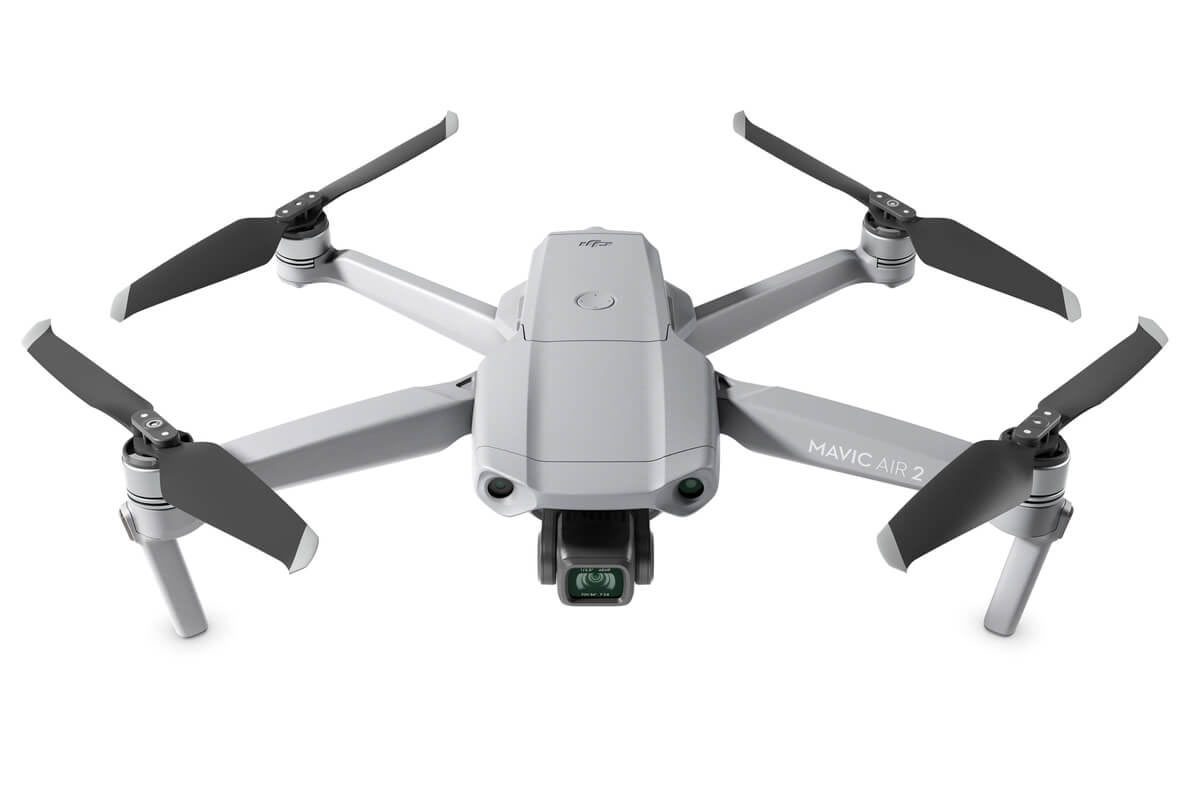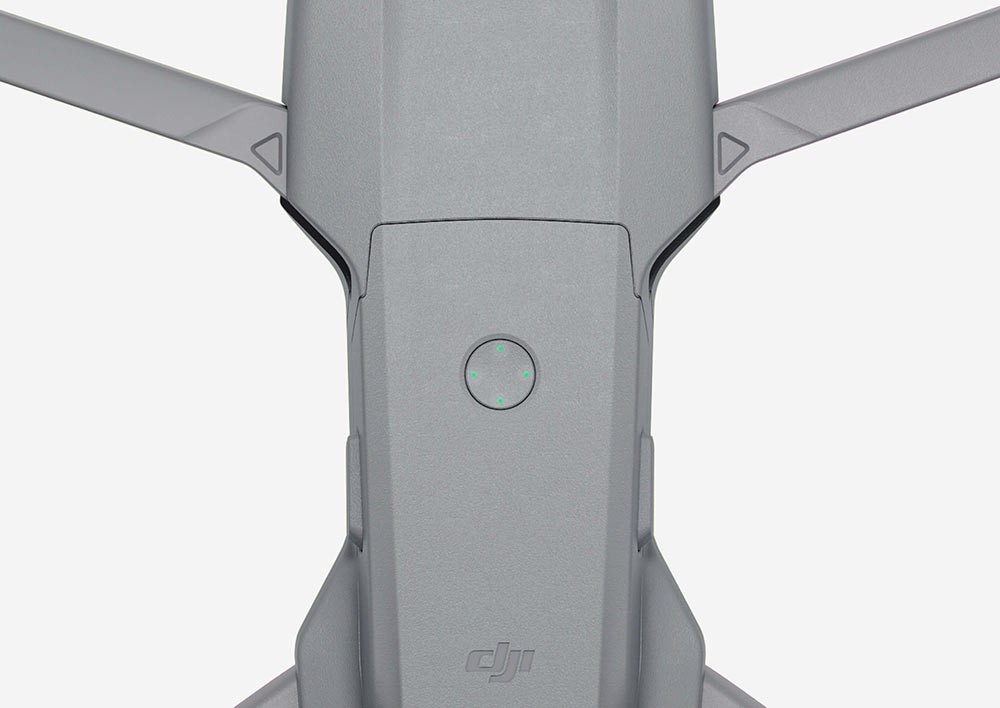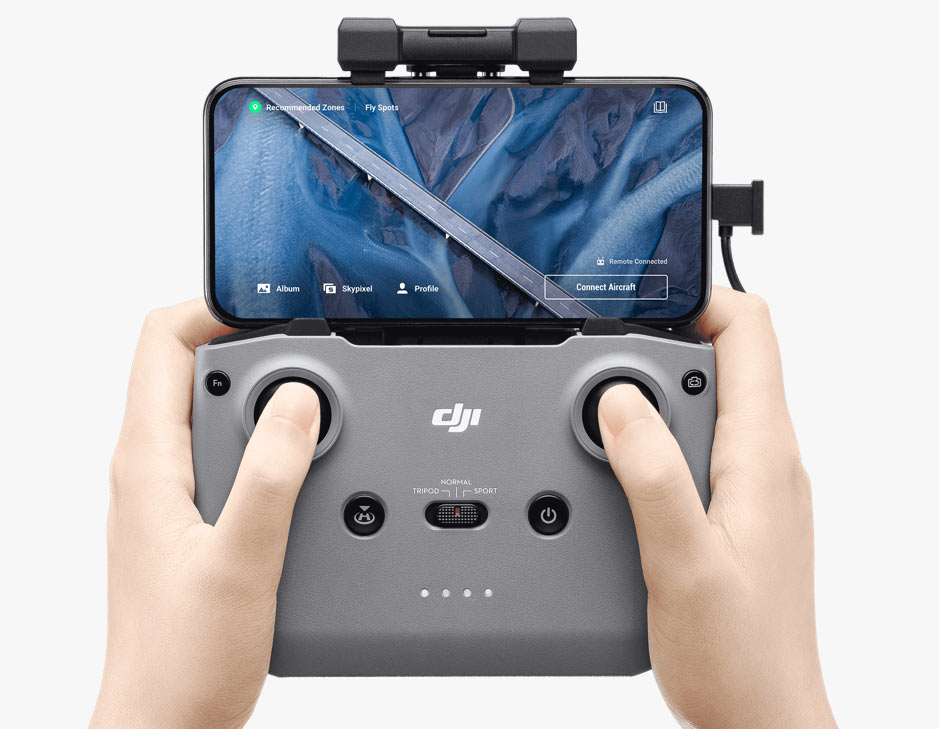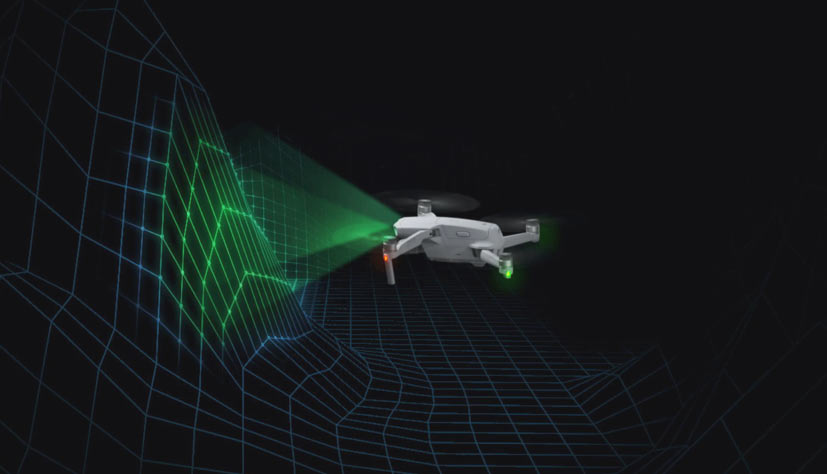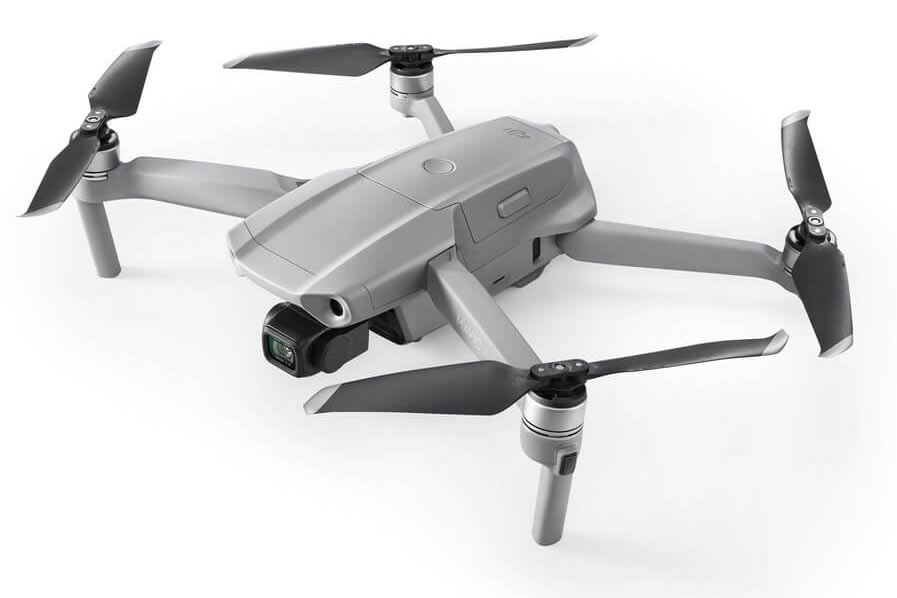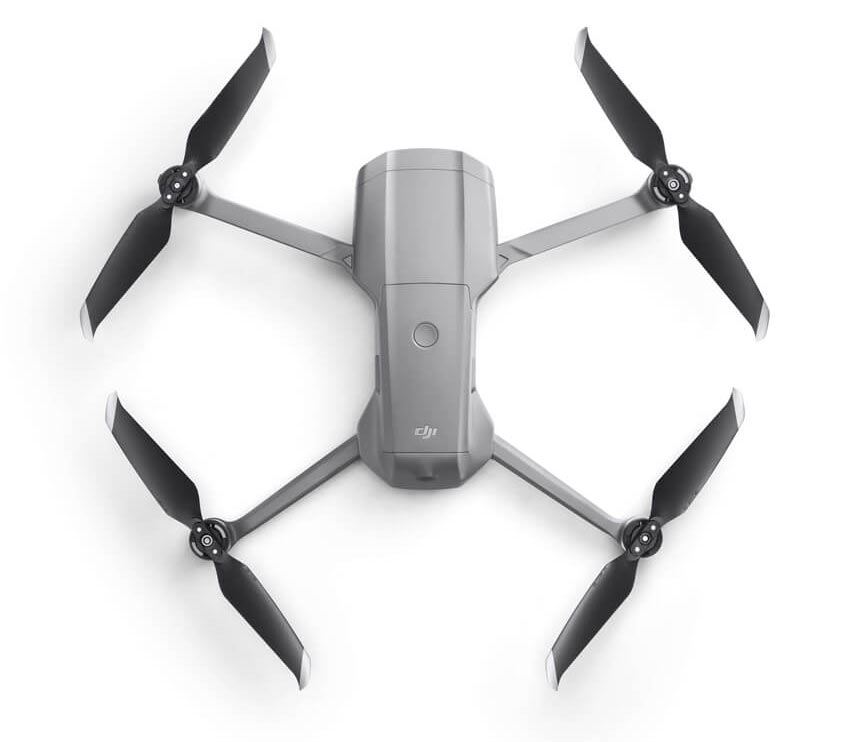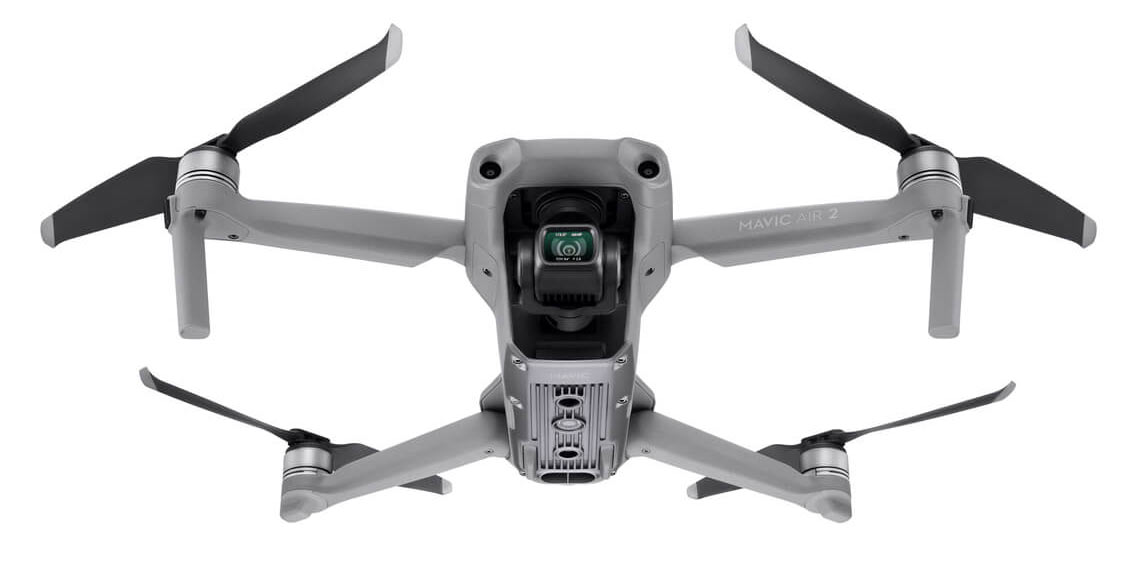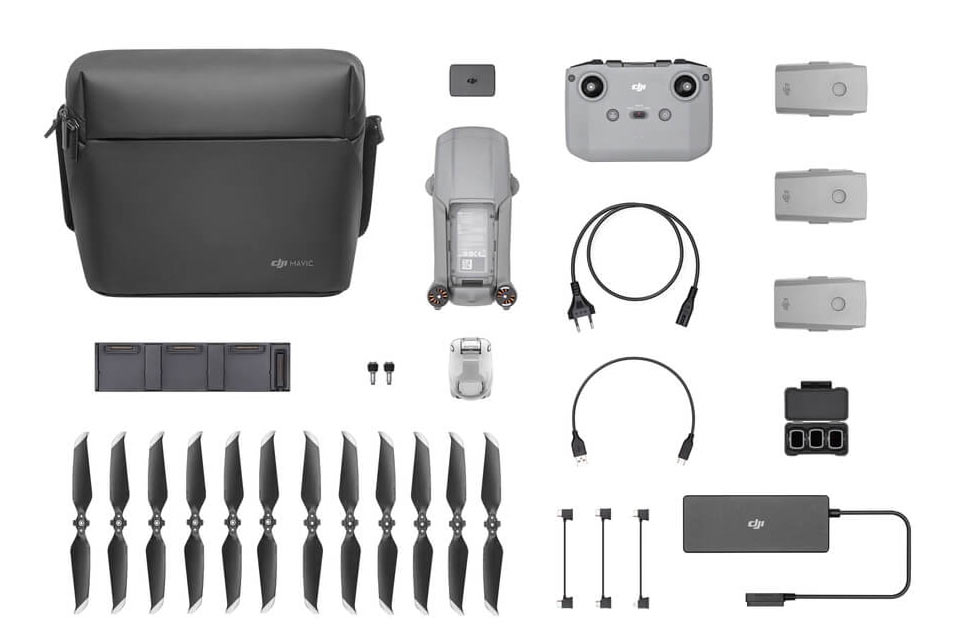Take an already decent consumer drone and add a better camera, better obstacle avoidance, higher frame rates and one of the longest lasting batteries on any drone, and you may just have a winner. That’s basically the new DJI Mavic Air 2 in a nutshell.
The new Mavic Air 2 specs give it a huge leg up on the pocketable Mavic Mini, and even improve on some of their higher end prosumer models. Here’s the glamour video, followed by a deep dive on the specs…
TL;DR – Why is the DJI Mavic Air 2 better?
The biggest improvements are in the camera and flight time. Despite being about 100g heavier than the Mavic Air 1, it adds ~70% more flight time…up from 21 minutes to 34 minutes! That alone makes it worth the upgrade if you’re using it for photos and video.
But those will be better, too, thanks to a larger 1/2″ sensor (up from 1/2.3″) with 48MP (up from 12MP). And their HDR now works on video, too, with the addition of electronic stabilization added to their built-in 3 axis gimbal. Video bumps unto 4K/60fps with the ability to do super slow motion at 240fps, too.
Max flight distance is 18.5km (up from 10km), and it can now fly in colder temps, as low as -10ºC (14ºF). That extra distance and flight time largely comes from the bigger 3500mAh battery (up from 2,375mAh), but there are some other design and software tricks they used to boost it, too.
One of the biggest physical improvements is the remote. It now puts your smartphone on top of the controller. This not only makes it easier to see while operating, it allows for bigger phones (and phones in cases) to fit more easily. It also has longer battery live, stronger interference resistance with automatic frequency shifting, and the ability to see 720p or 1080p live video transmission.
What about obstacle avoidance?
The DJI Mavic Air 2’s obstacle avoidance supposedly improved, too. The numbers definitely lend credibility to that: Forward and rearward measurement range (22m and 23.6m for precision measurement, 44m and 47.2m max, respectively) roughly doubled from the Air 1, giving it more of a heads up as it approached something.
Equally important, the Field of View of the forward detection system increased dramatically, giving it a much bigger picture of what’s coming up. And, the sensing speed improved by about 50%, so it can react faster. The Mavic Air 2 still doesn’t get side or top sensors, though, only fore, aft and bottom.
It adds a forward-facing LED light to improve its safety vision, but it’s the software that’s the star of the story. Called APAS 3.0, it basically creates a realtime map of its surroundings so it can better react. DJI says it’s the best obstacle avoidance software on any of their drones, and that it dramatically smoothes the drone’s flight path over or around obstacles.
Active tracking is also improved, letting it follow you more accurately, even if you pass behind something for a second or two. Maybe the best new features are upgraded auto modes. Spotlight 2.0 lets you choose a moving subject, then just fly the drone where you want while the camera keeps the subject centered for you.
Need more speed? Turn all the safety measures off, put it in Sport Mode, and it’ll cruise at up to 68km/h (42.25mph).
It’s worth mentioning the Mavic Air’s main competition, the Skydio 2. That model comes in a couple hundred bucks more for the base unit and quickly gets more expensive, but adds more sensors and arguably better overall obstacle avoidance based on some reviews we’ve seen…but it’s also not immediately available.
DJI Mavic Air 2 video specs
Before we get to the pros, there are two camera specs that see ever-so-slight decreases. The Air 2’s FOV drops 1º to 84º, and it’s focus range increases to 1m (up from 0.5m on the Air 1). Small things, but perhaps important to a couple users.
It’ll shoot 2.7K and 4K video in 24/25/30/48/50/60 frames per second in standard mode. Drop the resolution to 1920×1080 and you can get up 120 and 240 fps settings for slower motion. Turn on the HDR and all resolutions max out at 30fps. One caveat: When recording at the higher frame rates, their full obstacle avoidance and ActiveTrack features are not available…so, careful where you’re flying it.
Prefer to do your color correction in post production? Use the D-Cinelike flat color profile setting to give you more control over the look back on your computer.
Bitrate jumps from 100 to 120Mbps, and it can capture in the newer HEVC (H.265) codec, which retains more detail while using less storage. I know, magic, right? The max microSD card size doubles to 256GB, so you’ll want a Class 10/UHS-1 rated card or higher to get all that data onto the card.
The gimbal automatically smooths the footage, and we’ve seen great results with our Mavic Air 1. You also have manual tilt control to aim the camera straight down (-90º) and up to 24º upward.
DJI Mavic Air 2 photo specs
Photos gain ISO range, now going from 100 to 6400 in manual settings, and 100 to 3200 in auto. That’s double what the Air 1 could do, albeit those max ISO numbers require you to set it to 12MP resolution. They cut in half when you increase it to the full 48MP resolution.
Probably falling more under video than photo, you can capture 8K Hyperlapse videos in certain auto-flying modes, too, as well as panorama photos.
Check out the full specs on their product page. Retail starts at $799 direct from DJI. The Fly More Combo (shown above) runs $988 and gets you three batteries, a multi-charger, extra propellers and a couple more small parts.
Disclosure: Some of these links are affiliate links that may earn a small commission for Bikerumor if you click on them and buy something. This helps support our work here without costing you anything extra. You can learn more about how we make money here. Thanks!
